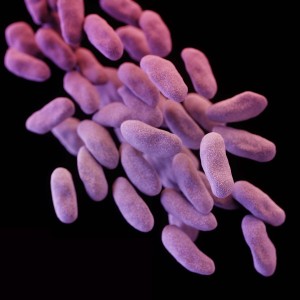A deadly strain of bacteria is frightening many in the U.S. and is suspected in the deaths of two Los Angeles hospital patients. It’s raising concerns about how to deal with hard to clean medical instruments.
At least seven people have been infected and two have died after being infected by an antibiotic-resistant strain of bacteria after undergoing endoscopic procedures at Ronald Reagan UCLA Medical Center in Los Angeles between October 2014 and January 2015. Nearly 200 patients are suspected of having been exposed to the bacteria known as CRE.
The hospital in question said the infections may have been transmitted through at least two contaminated endoscopes that were used to diagnose and treat pancreas and bile-duct problems.
The infections occurred even though the instruments had been cleaned according to the manufacturer’s instructions, the hospital said.
CRE can cause infections of the bladder or lungs and symptoms can include coughing, fever and chills.
Doctor Ford Vox of Atlanta’s Shepherd Center, in the U.S., discusses the outbreak
CCTV America interviewed Dr. Ford Vox, a physician at Atlanta’s Shepherd Center in the U.S. about the bacteria outbreak in a Los Angeles hospital. Dr. Vox is also a journalist with a focus on medical practice, health-care policy and medical science.

 CGTN America
CGTN America This illustration released by the Centers for Disease Control depicts a three-dimensional (3D) computer-generated image of a group of carbapenem-resistant Enterobacteriaceae bacteria. The artistic recreation was based upon scanning electron micrographic imagery. A potentially deadly “superbug” resistant to antibiotics infected seven patients, including two who died, and more than 100 others were exposed at a Southern California hospital through contaminated medical instruments, UCLA reported Wednesday Feb. 18, 2015. (AP Photo/Centers for Disease Control)
This illustration released by the Centers for Disease Control depicts a three-dimensional (3D) computer-generated image of a group of carbapenem-resistant Enterobacteriaceae bacteria. The artistic recreation was based upon scanning electron micrographic imagery. A potentially deadly “superbug” resistant to antibiotics infected seven patients, including two who died, and more than 100 others were exposed at a Southern California hospital through contaminated medical instruments, UCLA reported Wednesday Feb. 18, 2015. (AP Photo/Centers for Disease Control)
